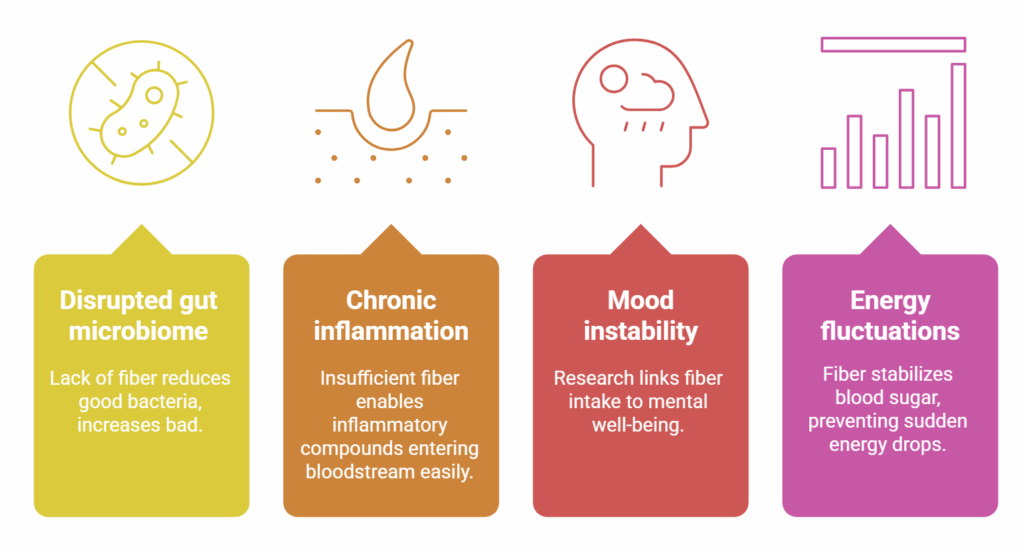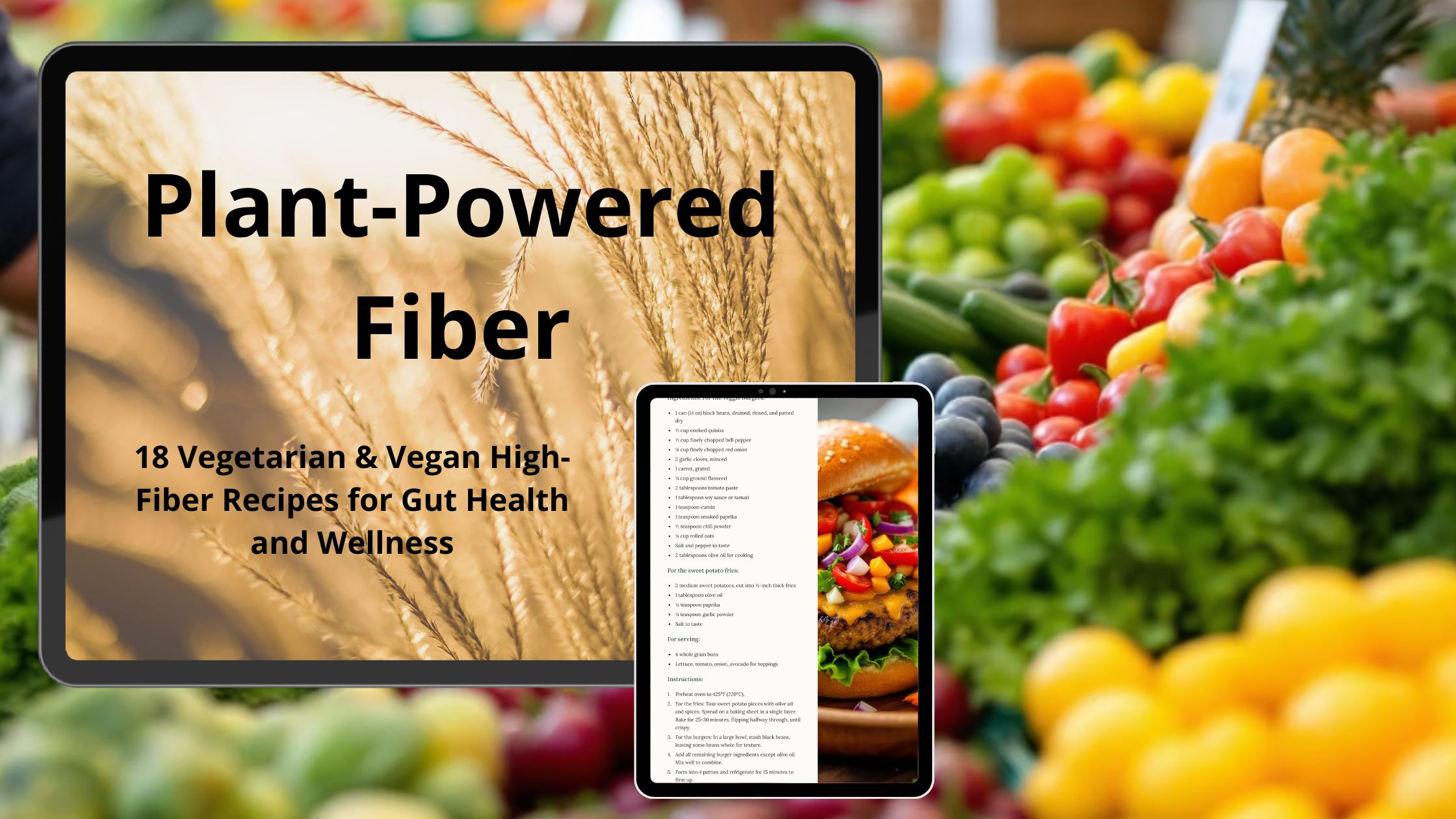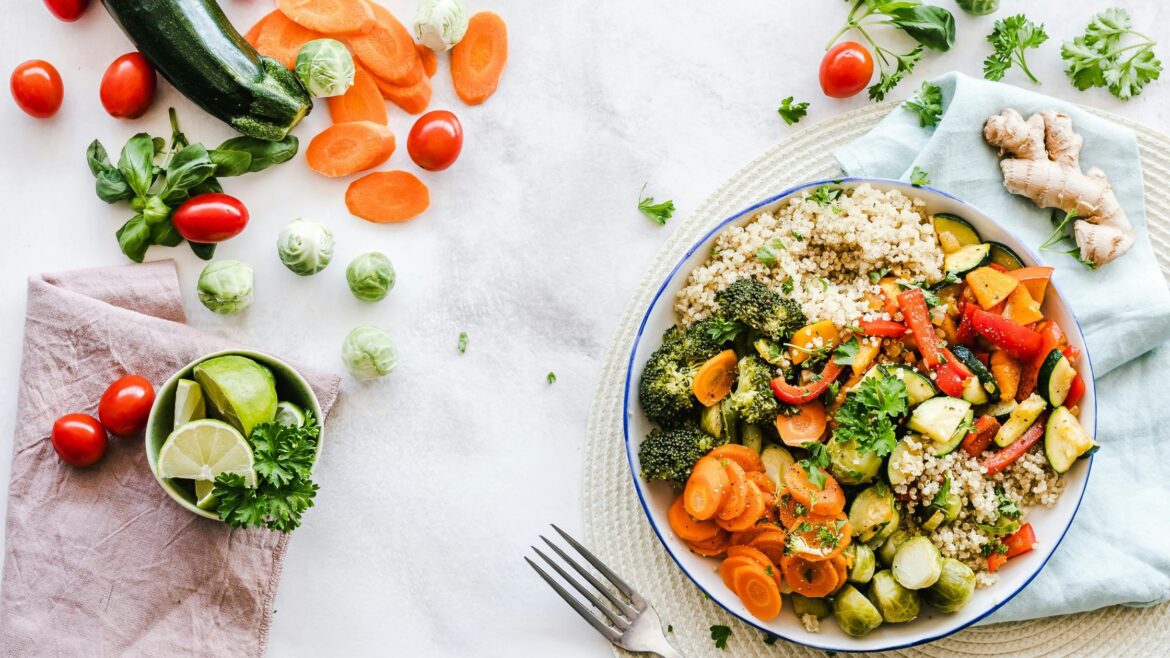In a world of trending diets and nutrition advice, one essential nutrient continues to be overlooked despite its profound impact on our health: fiber.
While most of us associate fiber with digestive regularity, emerging research reveals that this plant-based powerhouse plays a far more significant role in our overall wellbeing—particularly when it comes to mental health.
The Surprising Link Between Your Gut and Your Mind
Have you ever experienced “butterflies” in your stomach when nervous or felt nauseated during times of stress?
These sensations aren’t coincidental—they’re physical manifestations of what scientists now call the “gut-brain axis,” a bidirectional communication network between your digestive system and your brain.
Recent research published in the journal Nature Neuroscience has shown that the trillions of microorganisms living in your intestines—collectively known as your gut microbiome—directly influence brain function and behavior. These beneficial bacteria thrive on dietary fiber, breaking it down to produce short-chain fatty acids (SCFAs) that reduce inflammation throughout the body, including the brain.
“The gut microbiome essentially acts as a second brain,” explains Dr. Sarah Johnson, gastroenterologist and researcher at Columbia University. “When we feed it properly with fiber-rich foods, it rewards us with improved mood stability, clearer thinking, and even better sleep quality.”
The Fiber Deficit Crisis
Despite these remarkable benefits, the average American consumes only 15 grams of fiber daily—about half the recommended intake of 25-30 grams. This fiber deficit has created a perfect storm for both digestive problems and mental health challenges.
Some consequences of this deficit are:

Plant-Based Fiber: Nature’s Most Powerful Prebiotic
While supplements exist, research consistently shows that fiber from whole food sources provides superior benefits. Plant-based diets—particularly vegetarian and vegan approaches—naturally deliver diverse fiber types that nourish different bacterial strains in your gut.
“There’s simply no pill that can replace the complex matrix of nutrients, antioxidants, and various fiber types found in whole plant foods,” notes nutritionist Maya Rodriguez, RD. “The key is diversity—each plant food feeds different beneficial bacteria.”
From Science to Kitchen: Making Fiber Delicious
This is where the new e-book “Plant-Powered Fiber: 18 Vegetarian & Vegan High-Fiber Recipes for Gut Health and Wellness” bridges an important gap.

Rather than presenting fiber as medicine to be tolerated, author Alex Chen transforms nutritional science into creative, crave-worthy dishes that deliver at least 5 grams of fiber per serving.
The collection features innovations like “Berry-Loaded Overnight Oats” (12g fiber) that combine soluble and insoluble fiber for complete digestive health, and the “Lentil and Vegetable Power Bowl” (16g fiber) that provides sustained energy through a perfect balance of protein and complex carbohydrates.
“I wanted to create recipes that people would genuinely look forward to eating,” explains Chen. “No one should have to choose between food that tastes good and food that makes them feel good.”
A Day of High-Fiber Eating: What It Looks Like
Imagine starting your day with creamy Chickpea Flour Breakfast Crepes topped with fresh vegetables (8g fiber), enjoying a hearty Three-Bean and Vegetable Soup (15g fiber) for lunch, and sitting down to a satisfying dinner of Black Bean and Sweet Potato Enchiladas with Avocado Sauce (11g fiber).
By day’s end, you’d have consumed 34 grams of fiber—exceeding the daily recommendation—while enjoying delicious, satisfying meals that keep blood sugar stable and energy levels consistent throughout the day.
Beyond Digestion: The Whole-Body Benefits of High-Fiber Eating
The benefits of these fiber-rich vegetarian recipes extend beyond gut and brain health:
- Sustained weight management: High-fiber foods create lasting fullness with fewer calories
- Improved heart health: Soluble fiber helps lower cholesterol levels
- Balanced blood sugar: Fiber slows carbohydrate absorption, preventing insulin spikes
- Enhanced detoxification: Insoluble fiber binds to toxins for efficient elimination
- Reduced inflammation: SCFAs produced from fiber fermentation have powerful anti-inflammatory effects
Starting Your High-Fiber Journey
If you’re new to high-fiber eating, nutrition experts recommend a gradual approach to allow your digestive system to adjust:
- Begin by adding one high-fiber meal per day for the first week
- Drink plenty of water to help fiber move through your digestive system
- Incorporate a variety of plant foods rather than relying on just one fiber source
- Pay attention to how different fiber sources affect you as individual responses can vary
The recipes in “Plant-Powered Fiber” are specifically designed to be gentle on the digestive system while delivering maximum nutritional benefit, making them ideal for fiber newcomers and veterans alike.
A Sustainable Approach to Wellness
Perhaps most importantly, high-fiber vegetarian and vegan eating represents a sustainable approach to wellness that benefits not only personal health but planetary health as well.
“When we choose plant-based fiber sources, we’re simultaneously reducing our carbon footprint, conserving water resources, and improving our health,” notes environmental nutrition researcher Dr. David Morgan. “It’s a rare win-win situation in our complex food system.”
The Bottom Line
In a health landscape often dominated by extreme approaches and elimination diets, increasing fiber intake through delicious plant-based recipes represents a refreshingly positive nutrition strategy. Rather than focusing on what to cut out, it emphasizes adding beneficial foods that nourish the gut-brain connection.
The science is clear: a fiber-rich vegetarian diet can transform not just your digestive health, but your mental wellbeing, energy levels, and long-term health outcomes. With resources like “Plant-Powered Fiber” making high-fiber eating both accessible and enjoyable, there’s never been a better time to harness the power of plant-based nutrition for total wellness.
Ready to transform your health with fiber-rich vegetarian and vegan recipes?
References:
- Johnson, K.V.A., Foster, K.R. (2018). Why does the microbiome affect behaviour? Nature Reviews Microbiology, 16(10), 647-655.
- Valdes, A.M., Walter, J., Segal, E., Spector, T.D. (2018). Role of the gut microbiota in nutrition and health. BMJ, 361, k2179.
- Reynolds, A., Mann, J., Cummings, J., Winter, N., Mete, E., Te Morenga, L. (2019). Carbohydrate quality and human health: a series of systematic reviews and meta-analyses. The Lancet, 393(10170), 434-445.
- Swann, O.G., Kilpatrick, M., Breslin, M., Oddy, W.H. (2020). Dietary fiber and its associations with depression and inflammation. Nutritional Neuroscience, 23(3), 237-250.

Leave a Reply